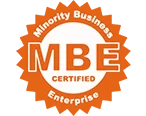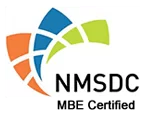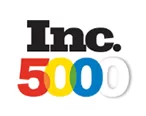In the competitive world of technology, your resume is more than just a list of past jobs—it’s a strategic tool to showcase your unique value. For women in tech, effectively highlighting your skills, impact, and potential can significantly boost your visibility and open doors to new opportunities. This guide offers ten practical tips to refine your resume, show how women can stand out in tech job applications, and ensure that resume captures attention and leads to the interviews you want.
- Quantify Your Impact, Don’t Just List Duties
It’s crucial to demonstrate the tangible impact of your work, not just what your responsibilities were. Hiring managers are looking for concrete results. Whenever possible, use numbers, percentages, and metrics to quantify your achievements.
- Instead of: “Managed social media campaigns.”
- Try: “Increased social media engagement by 30% and drove 15% more website traffic through targeted content strategies, resulting in a 10% increase in lead generation.”
This approach clearly illustrates your value and the positive outcomes you’ve delivered.
- Showcase Your Technical Prowess with Specificity
Your technical skills are a cornerstone of your resume. Be precise. Create a dedicated “Technical Skills” section and list your proficiencies accurately. Specify programming languages, frameworks, tools, software, and methodologies you’re proficient in.
- Instead of: “Proficient in data analysis.”
- Try: “Expert in Python (Pandas, NumPy, Scikit-learn), SQL, R, and Tableau for advanced data analysis, predictive modeling, and data visualization.”
Always tailor this section to emphasize the skills most relevant to the specific job description.
- Highlight Leadership, Collaboration, and Mentorship
Technology thrives on teamwork. Emphasize instances where you’ve demonstrated leadership, fostered collaboration, or mentored others, even if you didn’t have a formal leadership title. This illustrates your ability to influence, guide, and contribute positively to a team environment.
- “Led a cross-functional team of five engineers to deliver a critical software update ahead of schedule, improving system performance by 20%.”
- “Mentored junior developers on best coding practices and agile methodologies, resulting in a 25% improvement in team code quality.”
- “Collaborated with product management and UX/UI teams to design and implement user-centric features, leading to a 10% increase in user satisfaction.”
Use strong action verbs to describe these contributions.
- Proactively Address Career Gaps (If Applicable)
If you have a career gap, address it confidently and positively rather than ignoring it. Frame the time by highlighting any transferable skills gained, personal development, or relevant activities.
- Example for family leave: “Career break taken for family responsibilities (2022-2024). During this period, honed advanced organizational, project management, and problem-solving skills.”
- Example for upskilling: “Dedicated 18 months to intensive self-study and certification in AI/Machine Learning, completing coursework in deep learning, natural language processing, and computer vision.”
Transparency, combined with a focus on continued growth, demonstrates resilience and initiative.
- Tailor Every Resume to the Specific Role
A generic resume is a missed opportunity. For every application, meticulously customize your resume to align with the specific job description. Identify keywords, required skills, and responsibilities, then naturally integrate them into your experience, skills, and summary sections.
- Action: Analyze the job posting for key terms like “cloud architecture,” “DevOps,” “agile,” or “cybersecurity.”
- Application: Ensure these keywords appear throughout your resume, demonstrating a direct match for the role’s requirements.
By tailoring your resume for tech jobs you want, this targeted approach significantly increases your chances of being recognized by Applicant Tracking Systems (ATS) and catches the hiring manager’s eye.
- Craft a Powerful Summary Statement
Begin your resume with a concise and impactful summary statement (2-4 lines) that immediately highlights your most relevant skills, experience, and career goals. The best summary statements for tech resumes serve as your quick introduction, designed to capture attention from the first glance. Tailor this section to reflect the specific requirements of the job.
- Example Summary for a Data Analyst: “Results-driven Data Analyst with 5+ years of experience transforming complex datasets into actionable insights for business growth. Proficient in SQL, Python (Pandas, NumPy), Tableau, and statistical modeling, with a proven ability to improve decision-making and operational efficiency.”
- Leverage Your Education and Certifications
Beyond simply listing your degree, highlight relevant coursework, significant projects, or academic achievements that demonstrate your technical aptitude, especially if you are a recent graduate. Include any industry-recognized certifications (e.g., AWS Certified Solutions Architect, PMP, Certified ScrumMaster) prominently, as these are highly valued in tech roles.
- Showcase Side Projects and Open-Source Contributions
If you have personal coding projects, contributions to open-source initiatives, project focused portfolios, or a strong GitHub profile, include them. These demonstrate initiative, passion for technology, and the practical application of your skills outside of a formal work setting. Provide links where possible.
- Optimize for Applicant Tracking Systems (ATS)
Many companies utilize ATS to filter resumes. To ensure your resume is effectively processed, incorporate keywords directly from the job description. Use standard headings (e.g., “Experience,” “Skills,” “Education”) and maintain a clean, readable format. Avoid excessive graphics, color changes, or unusual fonts that might not be parsed correctly by ATS.
- Don’t Self-Select Out: Apply Even if You’re Not 100% Matched
Research suggests that women often apply for jobs only when they meet 100% of the qualifications, unlike their male counterparts who will apply with just a 60% match. Challenge this tendency. If you meet most of the core requirements and genuinely believe you can quickly learn the remaining skills, apply. Highlight your transferable skills, your capacity for rapid learning, and your genuine enthusiasm for the role. Companies often seek potential and cultural fit as much as a skill match. Your confidence and willingness to grow can be a decisive factor.
Bonus Tip 1: Leverage AI as Your Resume Co-Pilot
In today’s tech landscape, using AI tools to improve your tech resume can be your secret weapon. Utilize platforms like generative AI (e.g., Gemini, ChatGPT) to:
- Brainstorm action verbs and impact statements: Input your responsibilities and ask AI to suggest ways to quantify your achievements.
- Tailor descriptions: Provide a job description and your current bullet points and ask AI to rephrase them to better match the job’s language and keywords.
- Identify missing keywords: Paste a job description and ask AI to highlight critical skills or terms you might have overlooked.
- Proofread and refine: Use AI for a final grammar and clarity check, ensuring your resume is polished and professional.
Remember, AI is a tool to assist you, not replace your critical thinking. Always review and customize its suggestions to ensure they accurately reflect your experience and voice.
Bonus Tip 2: Don’t Forget Your Soft Skills Superpowers!
While technical skills are non-negotiable in tech, your soft skills are equally vital and highly sought after. Integrating soft skills into a technical resume helps you stand out. Recruiters look for individuals who can communicate effectively, solve problems creatively, adapt to change, and work well within a team. Weave these into your experience descriptions.
- Communication: “Presented complex technical findings to non-technical stakeholders, improving project understanding and buy-in.”
- Problem-Solving: “Debugged and resolved critical system errors under pressure, minimizing downtime by 90%.”
- Adaptability: “Quickly adapted to new project management methodologies (Agile to Scrum), ensuring seamless team transition and sustained productivity.”
- Critical Thinking: “Analyzed diverse data sources to identify root causes of customer churn, leading to the development of targeted retention strategies.”
Show how your interpersonal and cognitive abilities amplify your technical contributions.
By applying these ten effective tips, along with the power of AI and a strong focus on your soft skills, you’re not just updating a document; you’re crafting a compelling narrative of your professional journey and capabilities. Embrace your achievements, showcase your unique contributions, and confidently present your best professional self. Your ideal tech role is within reach—take the next step and go for it!


 contact@shetek.net
contact@shetek.net 





Blog comment section